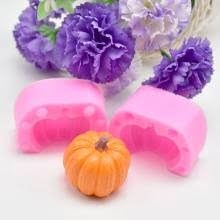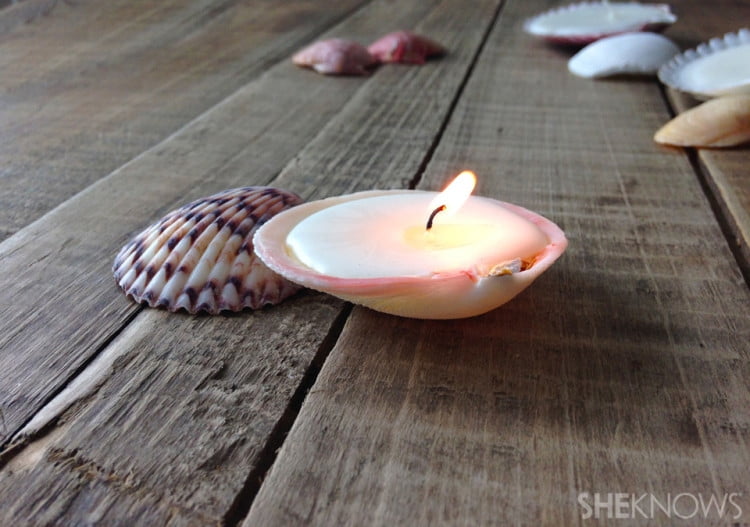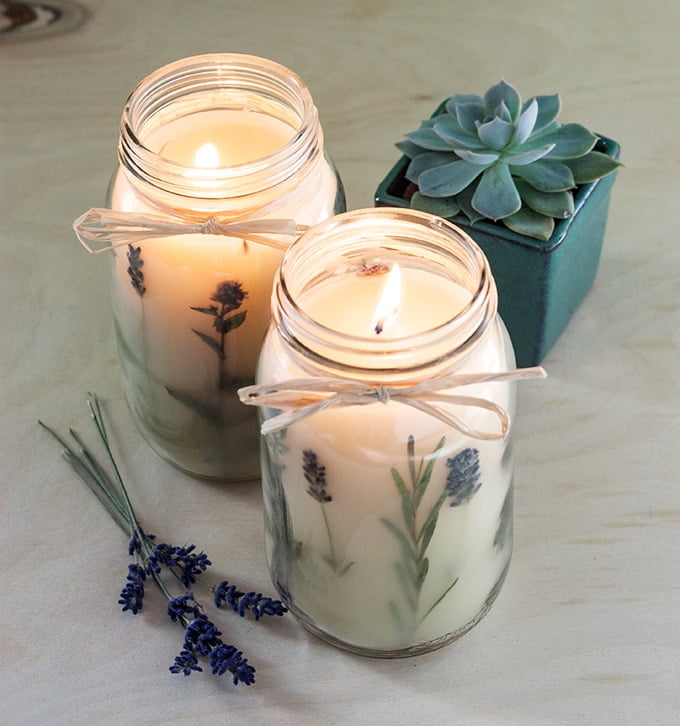Candle making is a popular hobby and craft that allows individuals to create beautiful and aromatic candles for personal use or as gifts. While there are many aspects to consider when making candles, one important factor that often goes overlooked is the melting point of the wax. The melting point of the wax used in candle making plays a critical role in determining the quality, burn time, and overall performance of the finished product.
In this article, we will delve into the significance of melting points in candle making and explore why it is crucial to understand and control this factor. We will explain the science behind melting points in candle making, discussing how it affects the consistency and stability of the wax as it transforms from solid to liquid form. By understanding this process, you can ensure that your candles burn evenly and produce a satisfying fragrance.
Furthermore, we will examine how different factors can impact the melting point in candle making. The type of wax used, additives incorporated, and blends created all contribute to variations in melting points. By exploring these variables, you can gain insight into which materials are best suited for specific projects or desired outcomes.
Understanding the importance of proper melting points in candle making is essential for avoiding potential issues such as tunneling and poor scent throw. These problems can greatly diminish the enjoyment and effectiveness of a candle. Throughout this article series, we will provide expert tips on how to test and measure melting points accurately so that you can achieve optimal results with your candles.
With knowledge about melting points at your disposal, you will have a valuable tool for mastering the art of candle making. Whether you are an experienced crafter or just starting out on this creative journey, understanding this critical aspect will empower you to create beautiful candles that burn smoothly and emit captivating fragrances. Stay tuned as we delve deeper into the world of melting points in candle making.
What is Melting Point in Candle Making
Melting point plays a crucial role in the process of candle making. It refers to the specific temperature at which a wax transitions from its solid state to a liquid state. Understanding the science behind melting point is essential for creating high-quality candles that burn evenly and efficiently.
The Science of Melting Point
In candle making, different types of waxes are used, each with its own unique melting point. The melting point of a wax is determined by the specific composition of its molecules and can vary depending on factors such as the type of wax, additives, and blends used.
When heat is applied to solid wax, it begins to absorb energy, causing the temperature of the wax to rise gradually. As the temperature reaches the melting point, the wax starts to soften and transform into a liquid. This occurs because the heat energy disrupts the bonds between the molecules in the wax, allowing them to move more freely and flow as a liquid.
Importance for Candle Burn Time and Quality
The melting point of a candle is directly related to its burn time and overall quality. If a candle has too low of a melting point, it may melt too quickly during burning, resulting in uneven burning, excessive dripping, and shorter burn times. On the other hand, if the melting point is too high, it may take longer for the wax to melt properly, leading to poor scent throw and inefficient burning.
By understanding and controlling the melting point during candle making, you can ensure that your candles burn evenly and have optimal performance. This involves selecting waxes with appropriate melting points for your desired results and using additives or blends effectively.
The Role of Melting Point in Candle Making
Melting point plays a significant role in determining the burn time and quality of a candle. The melting point refers to the temperature at which the wax in the candle becomes a liquid and is ready to be burned. It is crucial to understand this aspect because it directly affects how the candle will perform.
One important factor that melting point influences is the burn time of the candle. A higher melting point usually results in a longer burn time. This is because wax with a higher melting point takes longer to completely liquefy, allowing for a slower release of fragrance and heat. On the other hand, candles with a lower melting point tend to have shorter burn times as the wax melts quickly, leading to faster consumption.
In addition to burn time, the quality of the candle is also influenced by its melting point. Wax with a higher melting point tends to be denser and harder, resulting in a more durable and long-lasting candle.
These candles are less likely to deform or droop during burning and have improved structural integrity. On the contrary, candles with lower melting points may be softer and prone to bending or warping when exposed to heat, potentially affecting their overall appearance and performance.
| Wax Type | Melting Point (°C) | Burn Time | Quality |
|---|---|---|---|
| Paraffin Wax | 58-70 | Longer Burn Time | Durable & Stable |
| Soy Wax | 46-52 | Variable Burn Time | Soft & Prone to Bending |
| Beeswax | 62-65 | Longer Burn Time | Durable & Stable |
In summary, understanding the role of melting point in candle making is crucial for achieving optimal burn time and quality. It determines how long a candle will burn and impacts its structural integrity. By choosing the right wax with the desired melting point, candle makers can create candles that meet their specific needs and preferences.
Factors Affecting Melting Point in Candle Making
In candle making, the melting point of wax plays a crucial role in determining the performance and quality of the finished product. The melting point refers to the temperature at which a solid wax transforms into a liquid state. Understanding the factors that affect melting point is essential for candle makers to achieve the desired results and avoid potential issues.
One of the main factors that influence melting point in candle making is the type of wax used. Different types of waxes have different chemical compositions, which directly impact their melting points. For example, paraffin wax has a relatively low melting point, typically ranging from 120 to 160 degrees Fahrenheit, making it easy to work with for beginners. On the other hand, soy wax has a higher melting point of around 120 to 180 degrees Fahrenheit.
Additives can also affect the melting point of candles. By adding certain substances such as stearic acid or microcrystalline wax, candle makers can increase the overall hardness and raise the melting point of their candles. This is particularly useful when working with softer waxes that may have lower melt points but require increased stability.
Blending different types of waxes is another way to manipulate the melting point in candle making. By combining waxes with varying melt points, candle makers can create custom blends that meet specific requirements for burning properties, scent throw, or aesthetics. Blended waxes can offer improved stability and enhanced fragrance release while maintaining a desirable melt pool temperature.
| Factors | Description |
|---|---|
| Wax Types | Different types of waxes have varying chemical compositions that determine their melting points. |
| Additives | Adding substances like stearic acid or microcrystalline wax can raise the melting point and increase candle hardness. |
| Blends | Combining different waxes allows candle makers to create custom blends with desired melting points, stability, and scent throw. |
By understanding these factors and their implications, candle makers can make informed decisions in selecting the appropriate wax, additives, and blends to achieve the desired melting point for their candles. This knowledge is crucial not only for producing high-quality candles but also for avoiding common issues like tunneling (when a candle burns straight down without utilizing all of the wax) or poor scent throw (when the fragrance does not adequately disperse from the candle).
Experimentation and testing are vital steps to master the art of candle making while taking into account the factors that influence melting point.
Understanding Different Wax Melting Points
Choosing the right wax for your candle is a crucial step in the candle making process. The melting point of the wax plays a significant role in determining the overall performance and quality of your candle. Understanding the different wax melting points is essential to ensure that you select the appropriate wax for your specific candle-making needs.
There are several types of wax commonly used in candle making, each with its own unique melting point. Here are some of the most common waxes and their corresponding melting points:
- Paraffin Wax: Paraffin wax has a relatively low melting point, typically between 120°F to 150°F (49°C to 65°C). This makes it an excellent choice for container candles and allows for even distribution of fragrance.
- Soy Wax: Soy wax has a lower melting point compared to paraffin wax, ranging from 110°F to 130°F (43°C to 54°C). It is known for its clean-burning properties and ability to hold a high amount of fragrance.
- Beeswax: Beeswax has a higher melting point compared to other waxes, usually around 144°F to 147°F (62°C to 64°C). It provides a natural golden glow and a subtle honey scent.
When choosing the right wax for your candle, it’s essential to consider factors such as desired burn time, scent throw, and the type of container or mold you will be using. Experimenting with different waxes can help you achieve the desired results.
In addition to the type of wax, additives and blends can also affect the melting point. Adding additives such as stearic acid or vybar can increase the overall melting point of your wax blend. However, it’s important to note that adding too many additives can negatively impact fragrance throw and burn time.
Importance of Proper Melting Point in Candle Making
Candles are not just decorative items; they serve a purpose by providing light and creating a pleasant ambiance. However, achieving the desired effects and ensuring a high-quality candle requires careful consideration of various factors, including the melting point of the wax used. Understanding the importance of proper melting point in candle making is crucial to avoid issues like tunneling and poor scent throw.
One of the key reasons why proper melting point is important in candle making is to prevent tunneling. Tunneling refers to the phenomenon when a candle burns straight down without fully utilizing its wax pool, leaving a thick wall of unmelted wax along the sides of the container. This not only affects the aesthetics of the candle but also reduces its burn time. By selecting waxes with appropriate melting points, candle makers can encourage full melt pools and prevent tunneling.
Another significant factor affected by melting point is scent throw. Scent throw refers to how well a candle disperses fragrance into the surrounding space when burned. The heat generated during burning melts the wax, releasing the fragrance oils into the air.
Waxes with higher melting points tend to hold onto fragrance oils for longer periods before releasing them into the air, resulting in better scent throw. On the other hand, waxes with lower melting points may release fragrance too quickly, leading to weak or short-lived scents.
To ensure that candles have an optimal melting point for avoiding issues like tunneling and poor scent throw, it is essential to consider several factors such as wax types, additives, and blends. Different waxes have different properties and thus varying melting points.
For instance, soy wax typically has a lower melting point compared to paraffin wax. By understanding these variations and selecting appropriate waxes or customizing blends with additives like stearic acid or vybar, candle makers can achieve candles with ideal properties for longer burn times and enhanced fragrance dispersal.
Testing Melting Point in Candle Making
When it comes to candle making, testing the melting point of the wax is crucial to ensure accurate results and achieve desired outcomes. This section will delve into various techniques and methods that can be employed to obtain accurate melting point measurements.
The Water Bath Method
One popular technique for testing melting point in candle making is the water bath method. This method involves placing a small amount of wax into a test tube or a small beaker, which is then placed inside a larger container filled with water. The container is heated gradually, allowing the temperature of the water to rise slowly.
As the wax begins to melt, its temperature is monitored closely using a thermometer. The point at which the wax completely liquefies is recorded as the melting point.
The Hot Plate Method
Another method commonly used to determine the melting point of candle wax is the hot plate method. In this technique, a small sample of wax is placed onto a preheated hot plate set at a low temperature. The temperature of the hot plate is then gradually increased until the wax starts to melt. Similar to the water bath method, a thermometer should be used to monitor and record the exact temperature at which full liquefaction occurs.
It’s essential to note that regardless of which method you choose, it’s important to conduct multiple tests using different samples from different parts of your batch, as well as perform tests on various batches if necessary. This will help ensure consistency and accuracy in your measurements, enabling you to make informed decisions about your candle-making process.
By employing reliable techniques like the water bath method or hot plate method, candle makers can effectively determine their wax’s accurate melting points. These measurements are integral in achieving consistent results and producing high-quality candles that burn properly and release fragrance optimally.
Commonly Asked Questions about Melting Point in Candle Making
As a beginner candle maker, you may have some questions about melting point in candle making. In this section, we will provide expert answers and tips to address some of the commonly asked questions related to melting point.
One common question is whether different types of wax have different melting points. The answer is yes. Different waxes have different melting points due to variations in their chemical composition. For example, paraffin wax typically has a lower melting point compared to soy wax. Beeswax has an even higher melting point than both paraffin and soy wax. It’s important to know the specific melting point of the wax you are using as it affects the performance of your candles.
Another frequently asked question is whether additives or blending waxes affect the melting point of the candle. The answer is that they can indeed impact the melting point. Additives such as stearic acid can increase the melt point of the wax, while certain oils or fragrances may lower it. When blending different waxes together, it’s essential to consider their respective melting points and how they interact with each other to ensure a cohesive blend that meets your desired results.
Additionally, many newcomers wonder if achieving a higher melting point will result in a longer burn time for their candles. While it’s true that a higher melting point can contribute to a longer burn time, there are other factors at play as well, such as wick size and diameter of the container. It’s crucial to strike the right balance between the wax’s melt point and other variables for optimal performance.
Conclusion
In conclusion, understanding the melting point in candle making is crucial for mastering the art of candle making. By grasping the science behind melting points and recognizing their significance for a candle’s burn time and quality, you can create candles that not only look beautiful but also perform exceptionally well.
Factors such as wax types, additives, and blends play a significant role in determining the melting point of your candles. Choosing the right wax with an appropriate melting point is essential for achieving optimal results. Additionally, understanding different wax melting points allows you to select the wax that best suits your specific needs and preferences.
Maintaining a proper melting point is vital to avoid issues like tunneling and poor scent throw. A candle with a too-high melting point may result in tunneling, where the wick burns down through the center of the candle, leaving unused wax on the sides.
On the other hand, a too-low melting point can lead to poor scent throw, where the fragrance does not adequately disperse in the air when lit. By ensuring a proper melting point, you can overcome these challenges and create candles that burn evenly and emit pleasant aromas throughout their lifespan.
To accurately determine and test the melting point of your candles, various techniques and methods are available. Conducting these tests will provide you with valuable insights into your chosen wax’s behavior and enable you to make necessary adjustments if needed.
In summary, by delving into the intricacies of melting points in candle making, you can truly master the art of creating exceptional candles. With knowledge about how different factors influence melting points and how to properly test them, you can produce candles that burn beautifully while emitting captivating scents. So go ahead, experiment with different waxes and blends, understand their melting points, and elevate your candle-making skills to new heights.
Frequently Asked Questions
What is the best melting point for candle wax?
The best melting point for candle wax depends on the type of wax being used and the specific application. Generally, a melting point between 120-150 degrees Fahrenheit is considered ideal for candle making. This range allows the wax to melt evenly and completely, ensuring a smooth and consistent burn.
However, it’s important to note that different waxes may have different optimal melting points. For example, soy wax typically has a lower melting point than paraffin wax. Finding the right melting point is crucial for achieving optimal performance in terms of scent throw, burn time, and overall candle quality.
What is melt point in candle making?
In candle making, melt point refers to the temperature at which the wax begins to liquefy and become molten. It is an important factor to consider when selecting a type of wax for candle production. The melt point determines how easily and evenly the wax will melt when exposed to heat (such as when burning a candle).
By choosing a suitable melt point for a specific application, candle makers can ensure that their candles burn effectively without potential issues like tunneling or incomplete melting of the wax pool. Understanding and controlling the melt point also helps in incorporating fragrance oils or other additives into the hot liquid wax at an appropriate temperature.
What does melting point mean for soy wax?
For soy wax, melting point refers to the temperature at which soy-based waxes transition from solid form to liquid form. Soy waxes are made from hydrogenated soybean oil and have relatively lower melting points compared to traditional paraffin waxes. The typical melting range for soy wax is around 110-135 degrees Fahrenheit, although this can vary depending on the specific formulation or blend used by different manufacturers.
A lower melting point allows for easier handling during candle making processes like pouring and molding, while also providing better scent distribution and improved burning characteristics when candles are lit. Thus, understanding the precise melting point of soy wax is important for achieving desired results in terms of both candle-making techniques and overall candle performance.

Welcome to my candle making blog! In this blog, I will be sharing my tips and tricks for making candles. I will also be sharing some of my favorite recipes.





